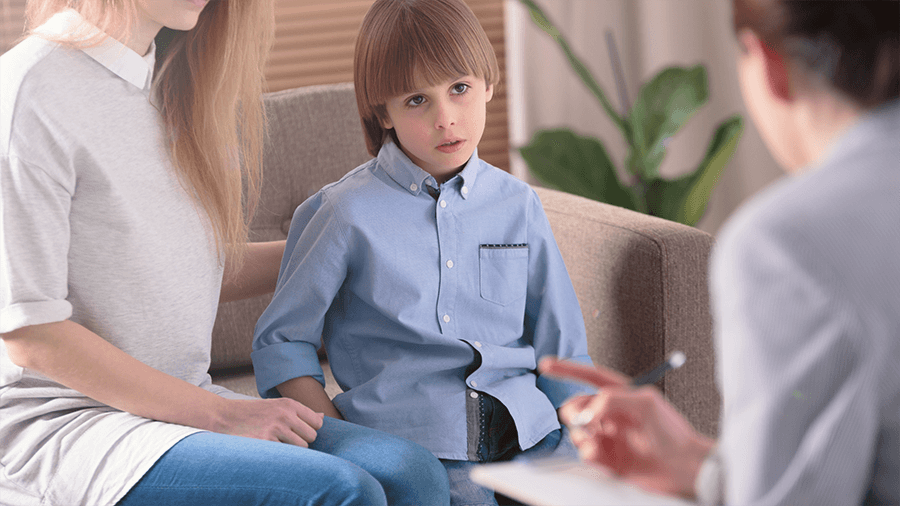What is autism spectrum disorder?
Autism Spectrum Disorder or ASD is a developmental disability or brain development disorder. Children and adults with ASD have different ways of learning and doing things. They have restricted or repetitive patterns of behaviour with difficulties in communication and social interactions.
The word “spectrum” refers to a wide range of types and severity of symptoms. ASD is a lifetime disorder which has no cure. Early treatment and management can improve the general well-being of people with ASD.
For more information about autism and treatment options, you may talk to us at Tomatis® www.tomatis.com.au – 1300 233 572
What are the different types of autism?
The types of autism are autistic disorder, Asperger’s syndrome, pervasive development disorder not otherwise specified (PDD-NOS), and childhood disintegrative disorder. In 2013, the Diagnostic and Statistical Manual of Mental Disorders (DSM-5) merged the different types. It has since been diagnosed as ASD with three levels of severity.
How many people have autism?
An estimated 52 million cases of autism were reported in 2010. It equates to one for every 132 people globally.
In Australia, there was a 25.1% increase in autism in three years. In 2018, there were 205,200 Australians with autism compared to 164,000 in 2015.
In the US, one in 54 children aged eight years have ASD, according to the Centers for Disease Control and Prevention (CDC). It is 18.5 for every 1,000 children across 11 US territories in 2016. There were 4.3 times more males than females with ASD in this population.
Of the 11 territories, intellectual ability or IQ scores were obtained in nine sites. Children with average to above-average range IQ score of >85 were at 44%. It was followed by children with intellectual disability with an IQ score of <70 at 31%. The remaining 25% comprised children in the borderline range with an IQ score of 71-85.

What are the symptoms of autism?
- Some communication problems/social interaction:
- Slow or do not respond when called
- Little to no eye contact
- Pay little attention when spoken to
- Facial expressions and body gestures don’t match words
- Tone of voice may be monotonous, robot-like, or sing-song
- Difficulty in understanding other people’s actions, expressions, and views
- Prefers to play or do things alone
- Some restricted/repetitive behaviours:
- Repeating words, called echolalia
- Stimming – repeating movements, such as flapping hands, hitting the head, or rocking back and forth
- Overly focused or intensely interested in a particular topic or object
- Gets upset when there is a change in routine, plan, or schedule
- Lack or excess sensitivity to sensory responses (sight, sound, touch, taste, smell, texture, or temperature)
- Problem with coordination or body movements
- Specific food preferences
What are the symptoms of autism in early childhood?
Children with autism may be delayed in the typical developmental milestones. A child with ASD may not be able to perform the following:
- By 6 months – show happy expression or smile
- By 9 months – mimic sounds or facial expression
- By 12 months – try to blurt words with babble and coo
- By 14 months – gestures using finger to point or hand to wave
- By 16 months – say simple words
- By 18 months – play pretend
- By 24 months – say short phrases
- At any age – language and social skills are visible

What are the causes and risks factors?
The exact causes of ASD are not yet fully known. Probable reasons may be due to biological and environmental factors:
- Hereditability of ASD was estimated at 80% based on data gathered from five countries. It means that the occurrence of ASD can be due to inherited genetic influences passed on by either mother or father.
- A sibling with ASD poses a high risk of having ASD according to a study of 277 twin pairs.
- The result of a study from 10 US study sites reveals that ASD risk increases among older parents.
- Pregnant women who took prescription drugs, thalidomide and valproic acid, had a higher risk of ASD.
- Another study suggests that the development of ASD may occur before, during, or after birth.
- Preterm children have a high risk for ASD.
- Prevalence of ASD among children with Down Syndrome is high. A chromosomal abnormality, such as Fragile-X Syndrome and tuberous sclerosis, are also linked to ASD.
- Exposure to environmental pollutants, specifically nitrogen dioxide (NO2) is associated with ASD. NO2 results from the burning of fossil fuels such as coal, oil, or gas from cars. Researchers found a link between ASD and exposure to NO2 of mothers during pregnancy and first year of life.
- ASD is linked to the gut-brain. A study reveals that gene mutation impacts the communication of neurons in the brain which causes autism. This mutation also causes gut dysfunction.
What is high-functioning autism (HFA)?
HFA is not an official diagnosis. It is not included in the ICD-10 and DSM-5 of the World Health Organization and American Psychological Association, respectively.
It has no official medical definition. However, HFA refers to a person who can speak, read, write, and go about activities of daily living. They are not intellectually challenged but may have difficulties communicating and socialising with others. This may be the reason why HFA has been associated with Asperger’s syndrome. HFA shares common symptoms such as problems in socialising, limited interests, and repetitive behaviour.

What are the different levels of autism?
There are three levels of autism based on DSM-5 diagnostic criteria.
-
Level 1: Requiring support
Level 1 is the lowest level that requires minimal support. People with level 1 autism have mild symptoms. They may show impaired social communication. They may find it hard to start a conversation with others and don’t normally respond as expected. They don’t have an interest in interacting with others and have a hard time making friends.
They are used to patterns of behaviour and have difficulty adjusting to changes. They need help when it comes to planning and organising tasks.
-
Level 2: Requiring substantial support
People with level 2 autism have more difficulty expressing themselves verbally and nonverbally. They may talk in phrases or short sentences and focus on a specific topic only. They have more difficulty functioning and coping with changes, which cause them distress. Training in speech and social skills serve as support.
-
Level 3: Requiring very substantial support
Level 3 is the highest level which requires most support. They are severely impaired verbally and nonverbally. Interacting with others is avoided. Repetitive behavioural patterns affect their ability to function. Their level of distress is high when they encounter a change in action or focus.
How is autism diagnosed?
Autism can be detected at 18 months or younger, based on the CDC. A reliable diagnosis can be made at age two years old. There are two stages in the diagnosis of autism in children:
Stage 1: General Developmental Checkups
All children should undergo screening for developmental delays, specifically autism at 18- and 24- months. More screening may be recommended for children who are at a high risk for autism. A doctor may ask important information from the parents to come up with an assessment. It includes the child’s family history and observation about the child’s behaviour and development.
Stage 2: Additional Evaluation
Further assessment may be needed if a doctor suspects a child of autism. A medical team of professionals conducts additional evaluation on the child. The medical team are developmental pediatrician, child psychologist/psychiatrist, neuropsychologist, and speech-language pathologist.
They assess the child’s age-appropriate skills, cognitive level, and language abilities. Blood tests and hearing tests may also be included in the evaluation.
- Diagnosis in adults is challenging since some symptoms may be like other mental disorders. Examples are attention deficit hyperactivity disorder and anxiety. An expert conducts assessment by asking questions about an adult’s communication issues. The expert also asks about sensory problems, repetitive/restrictive behaviours, and social interactions.
Why is a hearing test recommended for autism?
Hearing impairment is more common among people with autism compared to the general population. A doctor recommends a hearing test when autism is being ruled out. A hearing test may confirm that a language and speech delay is caused by autism and not a coexisting condition, such as a hearing problem.
There are different kinds of hearing tests. These are hearing screening for newborn, auditory brain response, and otoacoustic emission test. A child must undergo a full hearing tests or audiology evaluation if the child does not pass the hearing screening.

How is autism treated?
There is no cure or perfect treatment for autism. It can be managed by medication and therapeutic interventions.
- Medication is used to treat some symptoms that are associated with autism. Some of these symptoms are anxiety, aggression, irritability, and repetitive behaviour.
Antipsychotics such as haloperidol was seen to be effective for children with autism. Risperidone, another kind of antipsychotic reduced aggression and tantrums of autistic children with below-average IQ. Serotonin-reuptake inhibitors were useful in reducing symptoms of mood disorders and repetitive behaviour.
Medications depend on co-occurring conditions, too. Parents should consult with their doctor about medicines for children with autism. A study shows that drugs are effective when combined with behavioural therapies.
- Non-drug treatment: Behavioural, education, and psychological therapy
Children under seven or eight years benefit from non-drug therapies as a first-line intervention. Social-communication interventions are helpful for children and adolescents. Psychological interventions for adults can focus on developing life skills, community access, and quality of life.
Other programs that may help people with autism include building up strength and reducing behaviour issues.

Can auditory processing training benefit people with autism?
Researchers Ferreira and associates conducted a case study in 2019. They found that a hearing problem was present among the participants with autism. It is also called auditory processing disorder. A computer-based auditory training program (CBATP) served as a therapeutic intervention.
The results show that CBATP improved the hearing performance of the participants with autism. The researchers noted that CBATP does not replace language therapies. But CBATP can assist people with autism to improve their academic and social skills.
FastForward is a commonly used CBATP with a focus on language training. It aims to improve the language, literacy, and reading skills of children.
The auditory-brain training, Tomatis® Method, has been helping children with Autism, Auditory Processing Disorder, and other learning, emotional regulation, and attention difficulties.
What is the Tomatis® Method?
A form of auditory brain training is the Tomatis® Method. It applies the principles of neuroplasticity or “the brain’s ability to modify, change, and adapt both structure and function throughout life and in response to experience.”
The Tomatis Electronic Gating® is designed to awaken the brain from a predictable state and puts it into an active listening state. Gating® creates unpredictable sound contrasts either in music or voice through switching of low and high frequencies.
It uses specialized headphones that transmit sound directly to the bones and air. Modified music and voice are played to stimulate the brain. It improves cognitive function, emotional abilities, and motor skills.
More than 2,000 practitioners use the Tomatis® Method in 75 countries. It helps over 200,000 people per year who struggle with learning disabilities other than autism.

How can the Tomatis® Method help people with autism?
The right ear is connected to the left side of the brain responsible for various functions including language processing. It includes emotional and intellectual functions, language and speech comprehension, and coordination and movement. As a result, people with delayed auditory processing may also have learning difficulties and behavioural issues. Autism is one of these learning and behavioural difficulties.
The Tomatis® Method works by retraining progressively the right ear. Retraining the right ear can help improve the left-brain functions associated with language and speech processing and learning and communication. Moreover, it regulates emotions and lifts the confidence of people with autism.
What is the Tomatis® Program?
The Tomatis® Method of auditory brain training Program is conducted by certified Tomatis® professionals. They assess a person and design an individual program based on four phases.
These are preliminary interviews, passive phase listening sessions, active phase listening sessions, and exit assessment. Auditory brain training programs take place in intensives with periods of rest to allow integration of the newly acquired patterns.
For more information about this innovative auditory processing or brain stimulation training, talk to us at Tomatis® 0291 990 240 or email us at info@tomatis.com.au.
Françoise Nicoloff
Official Representative of Tomatis Developpement SA in Australia, Asia and South Pacific, Director of the Australian Tomatis® Method, Registered Psychologist, Certified Tomatis® Consultant Senior, Tomatis® International Trainer and Speaker, Co-author of the Listening Journey Series, 40 Years of Experience, Neurodiversity Speaker



